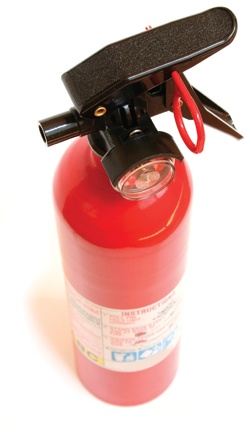House fires can happen in seconds: In one instant, you could go from whipping up dinner to watching flames leap from the stovetop.
According to the National Fire Protection Association, about three-quarters of all reported structure fires occur in homes each year. In the right hands, a household fire extinguisher can save lives and protect property should a small fire start.
“Every home should have at least one fire extinguisher, and you need the right type, and you must know how and when to use it,” said John Drengenberg, consumer affairs manager at Underwriters Laboratories (UL), the nonprofit agency that tests and sets minimum standards for electricity-consuming items.
Fire extinguishers should be placed in easily accessible areas of the home, close to where they might be needed (such as in a kitchen, garage or bedroom). Some basic rules to keep in mind when using household fire extinguishers:
- If the fire is not spreading and remains confined to a small area, use the appropriate type of extinguisher. Select a multipurpose extinguisher (rated A, B or C) with the UL mark that can be used on all types of fires such as wood, cloth, paper, flammable liquids (gasoline, oil, grease, oil-based paint) and energized electrical equipment including wiring, fuse boxes, circuit breakers and appliances.
- Know both your limits and those of the fire extinguisher.
- Periodically inspect your extinguishers to determine whether they need to be recharged or replaced. Extinguishers need to be recharged or replaced after each use—even if you haven’t used the entire amount of extinguishing agent inside. Check the gauge on the fire extinguisher for this information.
- When operating a fire extinguisher, stand at least 6 feet from the fire and keep your back to a door so you can escape easily, if necessary.
- Remember the acronym PASS:
Pull the pin, hold the extinguisher away from you and release the locking mechanism.
Aim low, pointing the extinguisher at the base of the fire.
Squeeze the lever slowly and evenly.
Sweep the nozzle from side to side.
“Fire extinguishers for home use are not designed to fight large or spreading fires,” Drengenberg stressed. If a blaze has become large, he advised, “rather than fighting the fire, your No. 1 priority should be getting out safely.”

